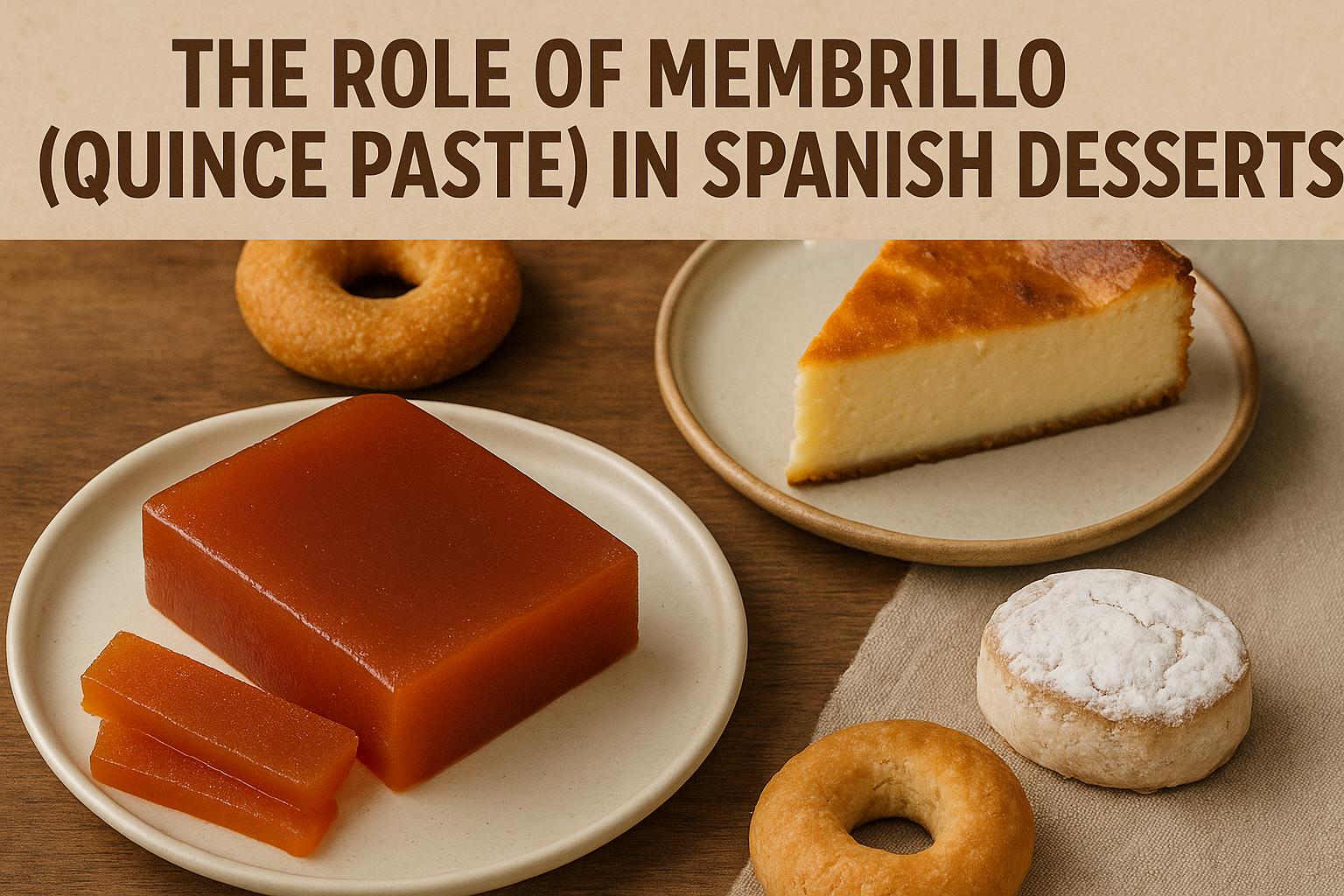
Membrillo, or quince paste, is a traditional Spanish delicacy with a long history dating back to antiquity. The quince fruit, from which membrillo is made, has been cultivated in the Mediterranean region for thousands of years. Its preservation in the form of a paste allowed it to become a staple in Spanish cuisine, particularly in desserts. The process of making membrillo typically involves cooking down quinces with sugar to create a sweet, thick paste.
Quince, the fruit at the core of membrillo production, is believed to have originated in the Caucasus region. It spread across the Mediterranean and into Europe through ancient trade routes. In Spain, the climate and soil conditions were ideal for the cultivation of quince, making it a prominent fruit in Spanish orchards. This historical backdrop helps explain why membrillo became a well-integrated element in Spanish culinary traditions.
The use of membrillo in desserts is most prevalent in Spain, where it pairs wonderfully with Manchego cheese. This combination is a common offering in Spanish households and restaurants. Beyond cheese pairings, membrillo can be used in various dessert applications, such as fillings for pastries, tarts, and cakes. Its dense, sweet, and slightly tangy flavor profile makes it versatile for numerous dessert recipes.
The pairing of membrillo with Manchego cheese is not only a popular culinary tradition but also a staple in Spanish tapas. The sweetness of the quince paste enhances the nutty, savory taste of the Spanish cheese, creating a balanced combination of flavors. This pairing is often featured on cheese boards and is a beloved appetizer for both locals and visitors alike.
One notable dessert that incorporates membrillo is the tarta de queso con membrillo, or quince cheesecake. This dessert balances the creaminess of cheesecake with the rich sweetness of quince paste. Similarly, membrillo can be found in empanadas, where it acts as a lush filling, often combined with nuts or other fruits. Furthermore, the paste can serve as an accompaniment to rice pudding or be used to glaze fruit tarts, enhancing their sweetness and adding a distinctive flavor.
In different regions of Spain, membrillo is incorporated into local dessert specialties. For instance, in Galicia, membrillo may be used in filloas (thin pancakes) with a drizzle of local honey. In the Basque Country, you might find membrillo in gateaux Basque, a traditional pastry filled with almond cream or custard. These regional adaptations highlight the versatility and widespread appreciation for membrillo throughout Spain.
Aside from its taste, membrillo offers nutritional benefits. Quince is rich in dietary fiber, vitamin C, and antioxidants. These attributes make membrillo an enjoyable option for those seeking a healthier sweet treat. Despite containing sugar, the natural benefits of quince can contribute to a balanced diet.
The quince fruit itself is known for several health benefits. Its high fiber content aids in digestion, while vitamin C boosts the immune system. Antioxidants present in quince offer protection against free radicals, contributing to overall well-being. Although the process of turning quince into membrillo involves adding sugar, the fundamental properties of quince still offer a beneficial aspect to this traditional sweet.
The role of membrillo extends beyond culinary use; it holds cultural significance in Spanish gastronomy. It frequently appears during festive occasions and is often given as a gift, encapsulating the rich tradition of Spanish dessert-making. For a closer look at its importance, you may wish to explore specialized culinary resources that delve into traditional Spanish festivals and dishes, such as those provided by local Spanish food culture websites.
During cultural festivities like the Day of the Dead (Día de los Muertos) or Christmas, membrillo is often served as part of the celebratory spread. Its presence in these celebrations underscores its role as a symbol of tradition and familial hospitality. The preparation and sharing of membrillo convey a sense of heritage and continuity across generations.
Membrillo remains a cherished element of Spanish desserts, appreciated for its versatility and deep-rooted cultural ties. Whether served with cheese or as part of a complex dessert, it continues to delight those who experience it. The enduring popularity of membrillo highlights its significance in preserving cultural traditions while offering a delightful taste experience. For more insights into the world of traditional Spanish desserts and the enduring legacy of membrillo, visit Spanish Cuisine Traditions.